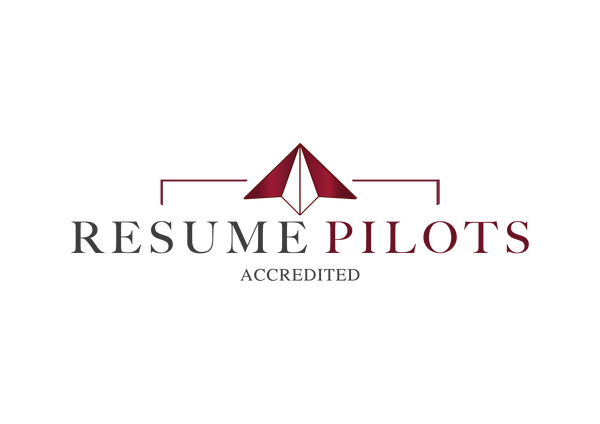
How to Add Metrics & KPIs to Your Resume
Why Resume Metrics Matter to Recruiters
In the competitive recruitment landscape, showcasing your achievements through measurable results is essential.
While many applicants effectively describe their daily responsibilities on their resumes, recruiters are particularly interested in seeing quantifiable accomplishments.
“By the time a candidate reaches the executive level, they should be able to showcase their strengths and back them up with tangible accomplishments that demonstrate they’ve made an impact in their previous roles,” Jon Hill, a recruiter from The Energists, explained.
Metrics serve as a powerful differentiator, increasing your chances of securing interviews and ultimately landing your desired position.
In this article, you'll learn:
- Why You Should Add Metrics to Your Resume
- Key Metrics to Include on Your Resume
- How to Incorporate Metrics Effectively
- How to Verify if Your Resume Includes Sufficient Metrics
Why You Should Add Metrics to Your Resume
Adding metrics and KPIs (Key Performance Indicators) to your resume is crucial for several reasons:
1. Metrics Demonstrate the Impact of Your Work
At the executive level, simply listing responsibilities isn’t enough.
As Darrell Rosenstein, a recruiter from The Rosenstein Group explained, “I want to see hard results and achievements…. Not just in words, but more importantly, in numbers.”
"Someone who is gunning for a top-management position must show their capacity to provide high-level solutions to the macro problems that any company has to deal with,” Rosenstein explained.
Metrics illustrate your capacity to deliver high-level solutions to organizational challenges.
2. Metrics Make Your Claims More Believable
On your resume, always aim to “show” instead of “tell."
We come across many resumes that utilize overused buzzwords and phrases such as:
- Seasoned executive
- Self-motivated professional
- Entrepreneurial leader
- Passionate, driven sales professional
Instead of relying on these types of buzzwords, use concrete metrics to back up your claims. This approach increases your overall credibility and avoids the pitfalls of vague language.
3. Metrics Show that You Are Results-Driven and Action-Oriented
Most importantly, metrics enable you to write accomplishment-driven bullet points and serve as a testament to the fact that you care about delivering results.
By adding metrics to your resume, you help recruiters and hiring managers to get a much better sense of how you will be able to practically add value to their organizations.
Key Metrics to Include on Your Resume
Regardless of your industry or role, there are various metrics you can incorporate into your resume.
Consider incorporating metrics related to sales and revenue, profitability, costs, people, marketing, partnerships, performance and operations, and data analysis.
To some extent, the metrics you have available will depend on how performance is measured in your current role or industry. However, even if you aren’t evaluated based on specific figures, you can still brainstorm ways to quantify certain elements of your role.
As you prepare your resume, reflect on the categories of metrics and KPIs below.
Under each category, we also included questions to help you brainstorm information you could potentially add to your document.
• Sales & Revenue Metrics
- Revenue Growth: By how much did you increase revenue on a month-over-month or year-over-year basis (either in total or for a given product)?
- Conversion Rate: By how much did you increase conversions?
- Frequency: How often did you execute sales campaigns?
- Customer Growth: By how much did you increase revenue for new customers versus existing customers?
• Profitability & Cost Metrics
- Company Net Profit: By how much did you improve the company’s net profit?
- Departmental Profit: By how much did you improve departmental profitability?
- Project Costs: By how much did you decrease project costs?
- Operating Costs: By how much did you reduce operating costs and in what areas?
• People & HR-related Metrics
- Recruitment: How many people did you interview or hire? Were you able to decrease the average time to hire?
- Team Leadership: How many people did you lead? How many teams did you oversee?
- Retention: By how much did you improve customer or team member retention or decrease turnover?
- Engagement: By how much did you improve employee engagement?
• Marketing Metrics
- Cost Per Conversion: By how much were you able to reduce cost per conversion?
- ROI: What was the ROI of your advertising campaigns?
- Traffic: How much were you able to increase store or online traffic?
- Content: How many articles did you write or ads did you create? Do you have any relevant engagement metrics?
- Emails: What was the email open/response rate you achieved?
- Phone Calls: How many leads did you contact and what percentage were you able to convert?
• Partnership & Deal-Related Metrics
- Quantity: How many partnerships did you create, deals did you close, or clients did you manage?
- Impact: What impact did the partnerships that you established have on the organization in terms of revenue, funding, or sales growth?
- Size: What was the size of the average deal you worked on?
• Performance & Operations Metrics
- Efficiency: How much were you able to improve efficiency in time or percentage terms?
- Output: By how much did you increase productivity or output?
- Client Satisfaction: How much did you improve customer satisfaction metrics such as CSAT or first response time?
• Analysis-Related Metrics
- Projects: How many projects did you analyze?
- Modeling: How many Excel models did you create? How many people used them?
- Outcomes: What results were you able to drive by leveraging insights from your analysis?
- Web: How did you improve website metrics such as bounce rate or domain authority?
How to Incorporate Metrics into Your Resume Effectively
When adding metrics to your resume, be sure to put them into context for your readers, helping them understand exactly why a given metric is relevant or impressive.
As Kelly Garland, Principal of Garland Source, explained, “Your resume [should demonstrate] that you are an impact player, able to drive change and make improvements, [and] solve pain. Make that clear and visible.”
To provide adequate context, answer the following questions for your readers:
- When (did you achieve the metric)?
- How (did this metric benefit the organization)?
- Why (was improving this metric or KPI important)?
Below, we provide examples of how you can add context to your metrics by asking yourself these questions.
• When?
- Before: Increased sales by 10%
- After: Increased sales by 10% in the first two months of entering the role
- Before: Signed 4 new hotel development deals
- After: Signed 4 new hotel development deals in 2020, which are scheduled to open by Q4 2021
• How?
- Before: Decreased project completion time by 25%
- After: Decreased project completion time by 25% by creating a new project management workflow in Asana
- Before: Reduced cost of goods sold by 12%
- After: Reduced cost of goods sold by 12% via contract renegotiations with 4 major suppliers and employee training to reduce waste
• Why?
- Before: Wrote 15 blog posts
- After: Wrote 15 blog posts to improve website traffic via SEO optimization strategies
- Before: Developed and rolled out 4 new Excel forecasting models
- After: Developed and rolled out 4 new Excel forecasting models that reduced month-end reporting time by 30%
How to Verify if Your Resume Includes Sufficient Metrics
To quickly see which metrics are already present on your resume, copy and paste it into the tool provided by Jobscan below.
Not impressed by the results? Read through the questions above to help you identify areas that you could potentially elaborate on.
In Summary
Never underestimate the importance of including metrics on your resume, as recruiters expect to see accomplishment-driven bullet points that demonstrate your value-add.
If you are currently employed, make it a priority to track your performance at work using an Excel spreadsheet or note-taking app.
You’ll not only be able to leverage this data on your resume moving forward, but you’ll also be able to bring it up during performance reviews.
By incorporating KPIs into your bullet points, tailoring your resume to your target roles, and keeping your formatting simple, you’ll be on the right track for a successful job search.
Considering working with an executive resume writer? Schedule a call with our team to learn more about how we can help accelerate your job search.

